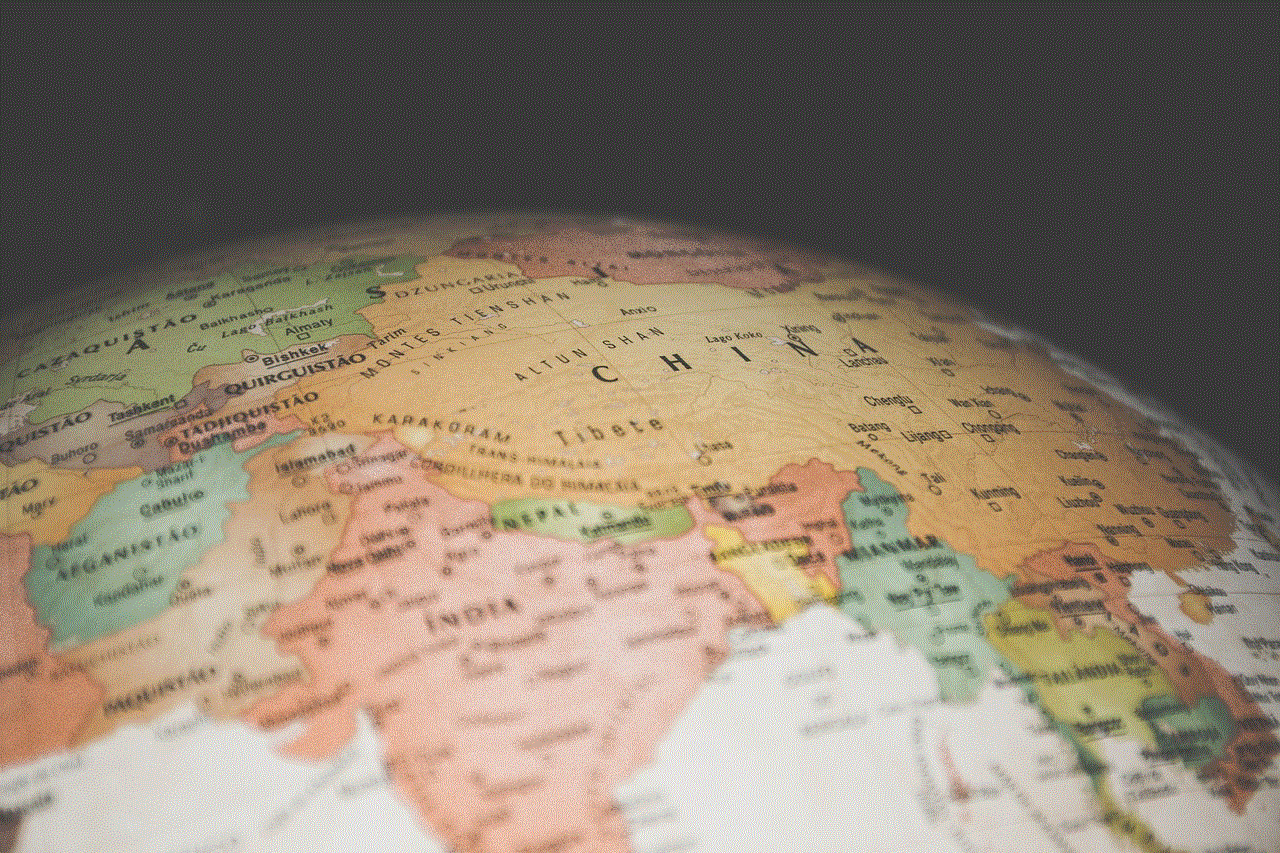youtube ip address block
YouTube, the world’s largest video sharing platform, has become an integral part of our daily lives. With over 2 billion monthly active users and over 1 billion hours of videos watched every day, it has revolutionized the way we consume and share content. However, like any other online platform, YouTube is not immune to issues such as copyright infringement, hate speech, and other forms of abuse. In order to combat these issues, YouTube has implemented various measures, including blocking certain IP addresses from accessing the platform. In this article, we will delve deeper into the concept of YouTube IP address block, its significance, and its impact on the users.
To understand the concept of YouTube IP address block, let us first understand what an IP address is. IP address stands for Internet Protocol address, which is a numerical label assigned to each device connected to a computer network that uses the Internet Protocol for communication. In simpler terms, it is the unique address of your device on the internet. When you access YouTube, your IP address is used to identify your location and device. This information is used by YouTube to customize your experience, such as recommending videos based on your location and language.
Now, let us move on to the main topic of discussion, which is the YouTube IP address block. YouTube has the power to block certain IP addresses from accessing the platform for various reasons. This means that if your IP address is on the blocked list, you will not be able to access YouTube, and all you’ll see is an error message. The reasons for this block could be varied, ranging from copyright infringement to spamming and abuse. In some cases, entire regions or countries may be blocked due to government regulations or restrictions. For instance, YouTube has been blocked in China since 2009 due to the country’s strict censorship laws.
One of the primary reasons for YouTube to block IP addresses is copyright infringement. YouTube has a strict copyright policy and takes immediate action against any user who violates it. If a user uploads copyrighted content without the permission of the copyright holder, the video is taken down, and the user’s account may be suspended. In some cases, the copyright holder may also request YouTube to block the IP address of the user to prevent them from uploading more copyrighted content. This is done to protect the rights of the content creators and ensure that their work is not illegally distributed.
Another reason for YouTube to block IP addresses is spamming and abuse. YouTube has a zero-tolerance policy towards spam and abuse on its platform. This includes spam comments, fake views, and likes, as well as abusive content. If a user is found to be engaging in such activities, their IP address may be blocked to prevent them from continuing their malicious behavior. This not only protects the platform from spam and abuse but also creates a safer environment for the users.
In addition to these reasons, YouTube may also block IP addresses for other violations of its community guidelines. These include hate speech, harassment, and threats. YouTube has been under scrutiny for not taking strict action against hate speech and harassment in the past. However, in recent years, the platform has been actively working towards identifying and removing such content. In some cases, YouTube may also block the IP address of a user who has repeatedly violated the community guidelines to prevent them from creating new accounts and continuing their harmful behavior.
While YouTube IP address block may seem like a necessary measure to protect the platform and its users, it has also faced criticism for its impact on innocent users. There have been cases where users have been mistakenly caught in the IP address block due to the actions of others sharing the same IP address. This has caused inconvenience to many users who were unable to access YouTube for no fault of their own. In such cases, YouTube has a process in place for users to appeal the block and prove their innocence. However, this process may take time, and the user is still unable to access YouTube until the issue is resolved.
Moreover, YouTube IP address block also affects users who rely on the platform for educational or entertainment purposes. For instance, students who use YouTube for research purposes may face difficulties if their IP address is blocked. Similarly, content creators who may have a legitimate reason to access YouTube, such as uploading original content, may also face issues if their IP address is blocked. In such cases, the block not only affects the user but also hinders the flow of information and creativity on the platform.
In conclusion, YouTube IP address block is a necessary measure to protect the platform from copyright infringement, spam, and abuse. However, it has its limitations and may also have an adverse impact on innocent users. YouTube must strike a balance between protecting its platform and ensuring that legitimate users are not affected by the IP address block. As users, we must also be mindful of the community guidelines and copyright policies to avoid getting our IP addresses blocked. After all, YouTube is a platform for everyone to share and consume content, and it is our responsibility to use it responsibly.
location is not available iphone
With the rise of technology and the increasing use of smartphones, location tracking has become a common feature in many devices. Whether it’s for navigation, finding nearby restaurants or simply keeping in touch with friends and family, knowing your location has become an essential part of our daily lives. However, there are times when the familiar blue dot on our phone’s map suddenly disappears and a message pops up saying “location is not available iPhone”. This can be frustrating and confusing, but it’s not an uncommon occurrence. In this article, we’ll explore the reasons why this message might appear and what you can do to fix it.
Firstly, let’s understand what this message actually means. When your iPhone says “location is not available”, it’s indicating that it is unable to determine your current location. This can happen for various reasons and can affect different apps on your device. For instance, your navigation app might not be able to accurately guide you to your destination, or your weather app might not be able to provide you with the current weather conditions in your area. In either case, this message is a clear indication that something is preventing your device from accessing your location information.
So what could be causing this issue? The most common reason is a poor GPS signal. Your iPhone uses a combination of GPS, Wi-Fi, and cellular data to pinpoint your location. However, if you’re in an area with poor network coverage, your device might struggle to get a strong GPS signal, which can result in the “location is not available” message. This is particularly common in rural areas or places with tall buildings that can block the GPS signal. Additionally, if you’re using an older iPhone model, it might not have the most advanced GPS technology, making it more susceptible to this issue.
Another reason for this message could be that the location services on your device are turned off. Location services are used by various apps on your iPhone to determine your location. If they’re turned off, your device won’t be able to access your location information, resulting in the “location is not available” message. To check if this is the case, go to your iPhone’s settings, select “Privacy”, and then “Location Services”. Make sure that the toggle switch next to “Location Services” is turned on and that the individual apps you want to use are also turned on.
Similarly, if you’ve recently updated your iPhone’s software, the location services settings might have been reset, causing this message to appear. In such cases, you’ll need to manually enable location services for each app that you want to use. This can be done by following the same steps mentioned above. However, if you’re using iOS 14 or later, you can also choose to share your precise location or approximate location with specific apps. This can be helpful if you don’t want certain apps to have access to your exact location at all times.
One less common but possible reason for the “location is not available” message is a hardware issue. If your iPhone’s GPS chip is damaged or malfunctioning, it might not be able to accurately determine your location. In such cases, you might also experience other issues such as incorrect location information or constant GPS signal drops. If you suspect that this might be the case, it’s best to take your device to an authorized service center for a check-up.
If none of the above reasons seem to be the cause of the issue, it could simply be a glitch in your device’s software. Just like any other electronic device, iPhones can also experience software bugs and glitches, which can result in various issues, including the “location is not available” message. In such cases, restarting your device can often resolve the issue. Simply press and hold the power button until the “slide to power off” option appears, and then slide to turn off your iPhone. Wait for a few seconds before pressing the power button again to turn it back on.
Another troubleshooting step you can take is to reset your network settings. This will reset all your network configurations, including Wi-Fi, Bluetooth, and cellular data. To do this, go to your iPhone’s settings, select “General”, and then “Reset”. Choose the “Reset Network Settings” option and confirm the action. Once your device restarts, check if the “location is not available” message still appears.



If the issue persists, you can also try resetting all settings on your iPhone. This will reset all your device’s settings, including display, sounds, and notifications, but it won’t delete any of your personal data. To do this, go to your iPhone’s settings, select “General”, and then “Reset”. Choose the “Reset All Settings” option and confirm the action. Once your device restarts, check if the issue is resolved.
In some cases, the “location is not available” message might only appear when using a certain app. This could be due to a bug or compatibility issue with the app itself. In such cases, you can try updating the app to the latest version or contacting the app’s developer for assistance. If the issue persists, you might have to delete the app and reinstall it to see if that resolves the issue.
Lastly, if none of the above solutions work, you can try restoring your iPhone to its factory settings. This will erase all your device’s data and settings, so it should only be done as a last resort. To do this, go to your iPhone’s settings, select “General”, and then “Reset”. Choose the “Erase All Content and Settings” option and confirm the action. Once your device restarts, you’ll have to set it up as a new device and check if the issue is resolved.
In conclusion, the “location is not available” message on your iPhone can be caused by various reasons, ranging from a poor GPS signal to a software glitch. By following the troubleshooting steps mentioned above, you should be able to resolve this issue and get your location services back up and running. However, if the issue persists, it’s best to take your device to an authorized service center for further assistance. After all, knowing your location is crucial in today’s fast-paced world, and no one wants to be left without it.
dish network tv channel setting
Dish Network is one of the leading satellite television providers in the United States, offering a wide range of channels and programming for its subscribers. With its advanced technology and user-friendly interface, Dish Network has become a popular choice for many households looking for a reliable and affordable TV service. One of the key features of Dish Network is its customizable channel settings, allowing users to personalize their viewing experience according to their preferences. In this article, we will delve deeper into the topic of Dish Network’s TV channel setting and explore how it works, its benefits, and how to make the most out of it.
What is Dish Network TV Channel Setting?
Dish Network TV Channel Setting is a feature that allows subscribers to choose and organize their preferred channels in a specific order. With this feature, users can create a personalized channel lineup, making it easier to navigate through the channels and find their favorite programs. The channel settings can be accessed through the Dish Network remote control or through the Dish Anywhere app, which is available for both iOS and Android devices.
How Does Dish Network TV Channel Setting Work?
The Dish Network TV Channel Setting works by allowing users to create a list of their preferred channels in a specific order. This list is then saved as a personalized channel lineup, which can be accessed at any time. The feature is available for all Dish Network packages, including the base package, which offers over 190 channels, and the premium packages, which offer up to 290 channels.



To set up your personalized channel lineup, you need to follow a few simple steps. First, using your Dish Network remote, press the “Guide” button to access the TV guide. Then, using the arrow keys, navigate to the channel you want to add to your personalized lineup. Once you have found the channel, press the “Select” button on your remote. A pop-up menu will appear, giving you the option to “Add to Favorites” or “Add to My Channels.” Select “Add to My Channels” to add the channel to your personalized lineup. You can repeat this process for all the channels you want to add to your lineup.
Benefits of Dish Network TV Channel Setting
There are several benefits to using Dish Network TV Channel Setting, which makes it a popular feature among subscribers. One of the main benefits is the convenience it offers. With a personalized channel lineup, you no longer have to scroll through hundreds of channels to find your favorite programs. This feature is especially useful for households with multiple viewers, as each member can have their own personalized lineup, making it easier for everyone to find the channels they want to watch.
Another benefit of Dish Network TV Channel Setting is the ability to save time. With a personalized lineup, you no longer have to spend time searching for your favorite channels. You can access them directly from your personalized lineup, saving you time and effort. This feature is especially useful during prime time when most people are trying to find the same channels, causing delays and frustration.
Moreover, Dish Network TV Channel Setting allows you to customize your viewing experience according to your preferences. You can arrange the channels in your lineup in any order you want, making it easier to navigate through them. You can also delete channels from your lineup that you do not watch, freeing up space and making it easier to find the channels you do watch.
Tips for Making the Most Out of Dish Network TV Channel Setting
To make the most out of Dish Network TV Channel Setting, there are a few tips that you can keep in mind. First, you can create multiple personalized lineups for different viewers. This way, each member of your household can have their own lineup, making it easier for everyone to find the channels they want to watch.
Second, you can rearrange the channels in your lineup at any time. This is useful when you want to add new channels or change the order of the channels. To rearrange the channels, simply press the “Guide” button on your remote, and then press the “Options” button. A menu will appear, giving you the option to “Edit My Channels.” Select this option to rearrange your lineup using the arrow keys on your remote.
Third, you can also set a parental control password to restrict access to certain channels in your lineup. This is especially useful for parents who want to control what their children can watch. To set up parental controls, press the “Menu” button on your remote, and then select “Parental Controls.” Follow the prompts to set a password and select the channels you want to restrict.
Lastly, you can also use the Dish Anywhere app to access your personalized lineup on your mobile device. This allows you to watch your favorite channels on-the-go, making it a convenient feature for those who are always on the move.



Conclusion
Dish Network TV Channel Setting is a useful feature that allows subscribers to personalize their channel lineup according to their preferences. With this feature, users can create a list of their favorite channels in a specific order, making it easier to navigate through the channels and find the programs they want to watch. The benefits of this feature include convenience, time-saving, and the ability to customize your viewing experience. By following the tips mentioned in this article, you can make the most out of Dish Network TV Channel Setting and enhance your TV viewing experience.